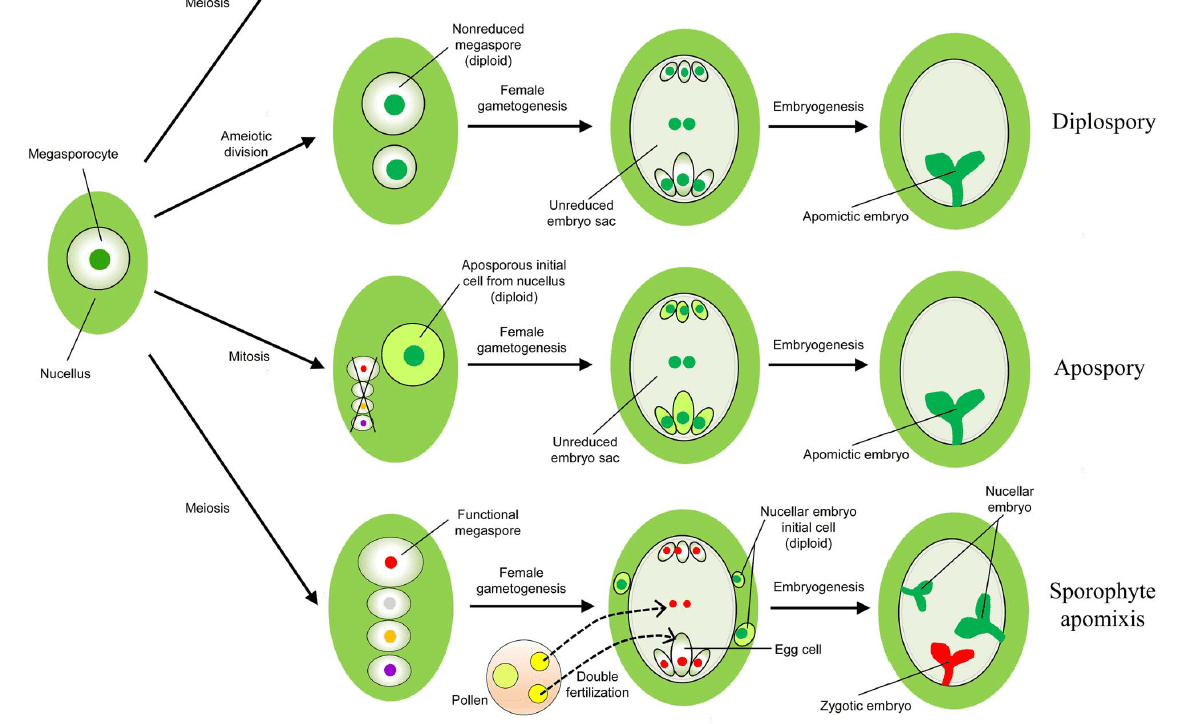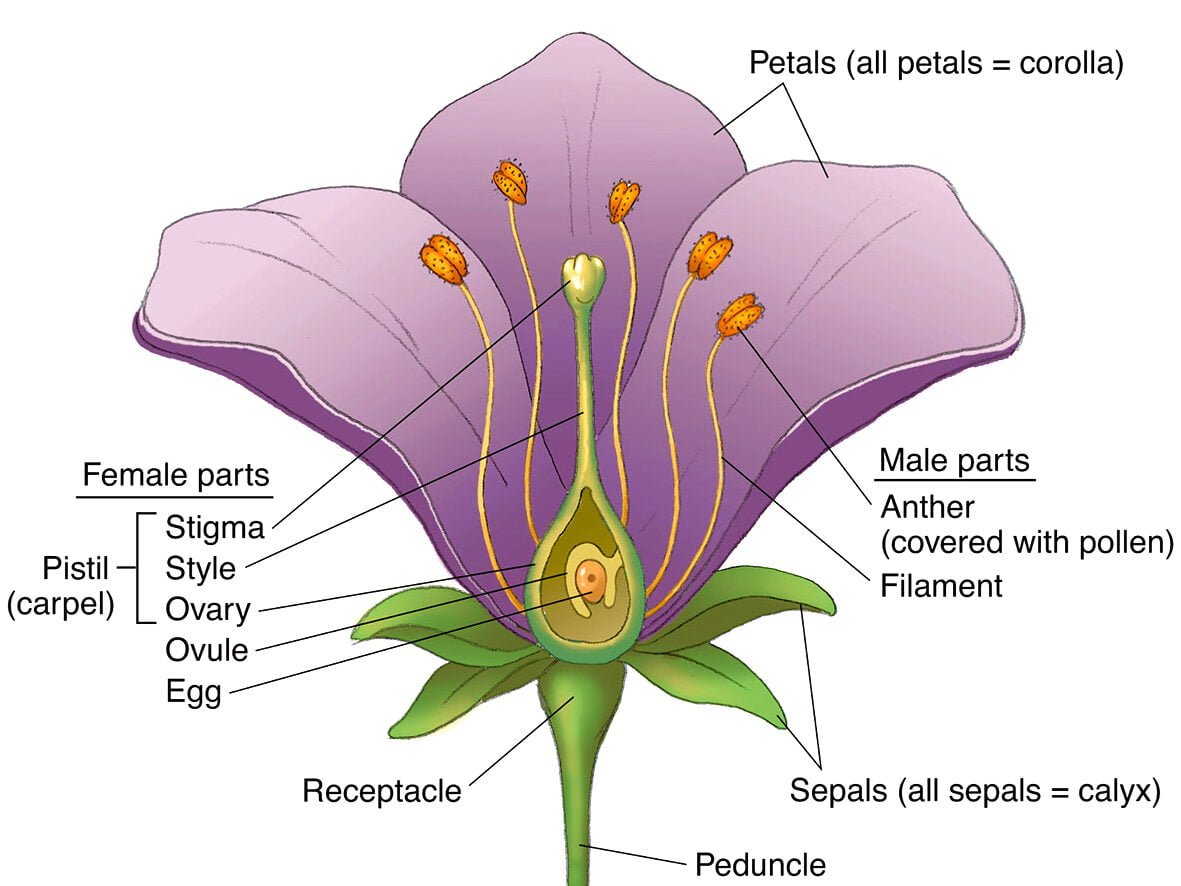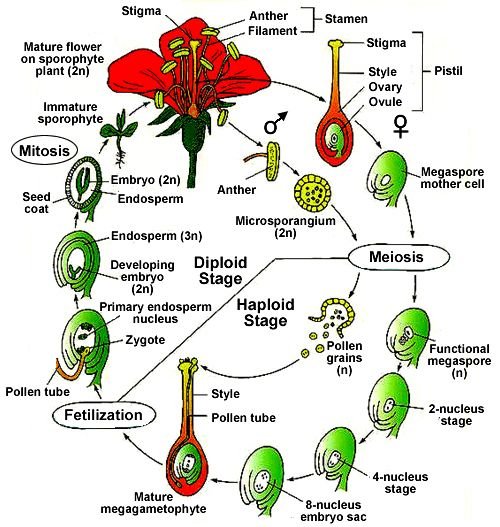What is Apomixis and What is Its Importance?
A Complete Guide for NEET, JEE, and Class 12 Students
Apomixis is a fascinating phenomenon in plant reproduction where seeds are produced without fertilization. Unlike sexual reproduction, apomixis allows plants to create genetically identical offspring, essentially cloning themselves. This process is crucial in agriculture, evolution, and plant breeding. In this article, we’ll explore apomixis in detail, its types (like diplospory and apospory), and its significance.
What is Apomixis?
Apomixis (from Greek: apo = away from, mixis = mixing) is a form of asexual reproduction in plants that mimics sexual reproduction but bypasses meiosis and fertilization. The resulting offspring are genetically identical to the parent plant.
Key Features of Apomixis:
- No fusion of gametes (fertilization is absent).
- Offspring are clones of the mother plant.
- Seeds are produced without pollination (in most cases).
- Common in grasses (e.g., dandelions, citrus, and some crops).
Types of Apomixis
Apomixis can be categorized based on how the embryo forms:
1. Diplospory
The embryo sac develops from the diploid megaspore mother cell without meiosis. The egg cell is already diploid and develops into an embryo without fertilization.
2. Apospory
The embryo sac forms from a somatic (non-reproductive) cell in the ovule, bypassing meiosis. The egg cell is diploid and develops parthenogenetically.
Importance of Apomixis
1. Agricultural Benefits
Apomixis allows farmers to preserve hybrid vigor indefinitely. Normally, hybrid seeds lose their superior traits in subsequent generations, but apomixis fixes these traits.
2. Genetic Uniformity
Since apomictic plants produce clones, they ensure uniform crop quality, which is vital for commercial agriculture (e.g., citrus fruits, mangoes).
3. Cost-Effective Seed Production
Farmers can replant seeds from apomictic plants without buying new hybrid seeds annually, reducing costs and dependency on seed companies.
FAQs About Apomixis
Q1: Is apomixis common in all plants?
No, apomixis occurs naturally in about 400 plant species, including dandelions, citrus, and some grasses. Scientists are trying to introduce it into staple crops like wheat and rice.
Q2: How is apomixis different from parthenogenesis?
Parthenogenesis is embryo development from an unfertilized egg, whereas apomixis involves seed formation without fertilization (may include other tissues like the embryo sac).
Q3: Why is apomixis rare in crop plants?
Most crops reproduce sexually to ensure genetic diversity. Apomixis is a complex trait controlled by multiple genes, making it hard to introduce artificially.
Summary
Apomixis is a unique asexual reproduction method in plants that produces seeds without fertilization. It has significant agricultural advantages, including preserving hybrid traits and reducing seed costs. While rare in crops, research is ongoing to harness its potential.
Got questions or thoughts on apomixis? Share them in the comments below!




